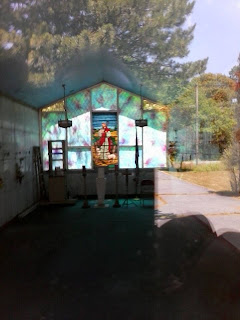At the turn of the 20th century millions of European immigrants were making there way to America for a better life for themselves and their families. Francisco Cannella, a native of Palermo, Italy had similar aspirations for himself and his family. Though didn't have quite enough resources to accomplish this. Not letting finances get in the way of his dream, Francisco headed off to America alone. He made a vow to God that if he would provide him enough to reunite with his wife he would attend church every day. Upon arriving in America, Francisco began working at a stone quarry and quickly raised enough funds to have his family moved to the United States.
He also vowed to keep his oath to God. Unfortunately this turned out to be more difficult than he had anticipated. The closest church to the Cannella family was located 9 miles away in Downingtown. The trek to the local sanctuary during the harsh Pennsylvania winters made this task quite difficult at times. Being knowledgeable in masonry and working in a quarry, Mr. Cannella did the next best thing. He built a tiny church on the corner of his property. Large enough for one to two people as well as a modest altar. For the next 24 years, until his death Francisco would attend his own church when unable to travel to Downingtown.
The church today is still owned by the Cannella family and is located near the Marsh Creek state park in Chester county. It's quite easy to drive by without even realizing you passed a church. It's windowless and looks like it could just be a storage facility or barn. There is a sign out front of the "Little Church" commemorating it's builder, a man who stood for what he believed in and wasn't afraid to follow his dreams no matter what they were.





















